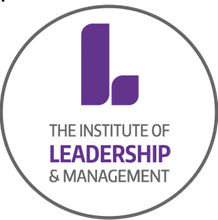Collaboration in a senior leadership team is not just about being able to work together – it’s about being able to work together at the right time.
As leaders move into the recovery phase of their pandemic journey, it’s important for them to understand that you can’t run a business by committee. It’s not a social club. You have to lead, and you have to be comfortable with being accountable for your decisions. A big part of that is knowing when you need to collaborate and when you don’t.
With that in mind, you must be very clear in your communications with team members about whether or not any talk you’re initiating is an actual discussion.
For example, I could come to you and say, “I think we really need a chat about what we’re going to do with the garden.” Now, if I’ve already decided what I’m going to do, I’ll just be leading you into a pointless conversation that’s not going to help anyone.
But I could say, “Yeah, this garden – I’m pretty fixed on a particular idea I have about what to do with it, and I don’t think I’ll be able to move on that. What do you think?” In that case, I’m signalling to you that a decision has been made, but I want to run it past you.
So, as a leader you must signal whether your chosen topic is one that a) you want an open discussion or conversation about; b) you've already decided on and are maybe just sense-checking, or c) you've already decided on and are now informing the relevant people of the precise nature of your decision. Being clear on that is really important.
Another point I would make to leaders in recovery mode is that you must look at the underlying rhythm of your organisation. Examine the tempo of how things get done. Think about what the rhythm was like before Covid, what it’s like now and how you would like it to be in the future.
This moment is such a great opportunity to drive changes that perhaps you’ve wanted to implement for ages, but haven’t been able to because of the sheer pace of business. It’s also a window for driving efficiencies and engagement.
Focusing on your organisational rhythm will enable you to take a look at the component parts of your business and find out whether they’re working properly – particularly on the interpersonal side. How do things really happen here? What sort of shape is our meeting culture in? Who do I need to speak to about what, and in which team? Should meetings be carried out by videocall, email or in person?
And most importantly, what are communication skills like in our staff base? Are people happy with being accountable?
This level of detail should also extend to working patterns – because, for me, the notion of a hybrid workplace is essentially a red herring. We must look at people as people and life as life and take a more granular approach – even if that means being granular to the level of the individual.
If your processes were rigid before Covid, then setting equally rigid parameters for hybrid working as we move forward – with set days in the office and set days at home – will not allow for the flexibility and innovation that have served companies so well in the past year.
Voices from our community: Jenni Field is founder and strategist at Redefining Communications and author of Influential Internal Communication.




